The history of Sri Lankan indigenous medicines - Hela Osu dates back to the era of the Great King Ravana who reigned from 2554 BC to 2517 BC in Sri Lanka. Sri Lanka was once called as “Heladiva,” which means the land of the Hela people. According to historical findings there were four tribes of the Hela people ruling different parts of the country. They were namely, Naga, Asura, Yakshas and Rakshas. These four tribes were called as “Siv Hela” which means four helas, later this “Siv Hela” becomes “Sinhala”and the great king Ravana belonged to the Rakshas tribe. Ravana ruled his kingdom in Southern & North East India and the South Asian islands from his ruling place in Sri Lanka.
It is said there have been 11 Ravanas found in Sinhalese(Heladiva) history such as Nala Ravana, Manu Ravana, Punu Ravana and Dasis Ravana. The most famous one is king Ravana who lived 5000 years ago. He is called Dasis Ravana which means the king with 10 great talents. He was a descendant of Surya Wansha (Vishravas) and the Hela Rakshas tribe.King Rawana is said to be one of the greatest physicians ever to have existed and was a master of 10 vidyas or 10 forms of knowledge, which is the symbolic representation of his famous "10 heads".
Ravana was the founder of `Sindhuram` medicines which cured wounds instantly and he was referred as Vaidya Shiromani. King Rawana was an author of many books on Hela Medicine (traditional medicines) such as Nadi Pariksha, Arka Prakasha, kumara Tantraya, Vatina Prakaranaya, Uddisa Chikistsakaya and Oddiya Chikitsa.
The Bisajjya Grantha and Nadi Shasthra mentions that King Ravana and his grandfather Pulasthi Muni had graced the world-famous medical conferences held in ancient days in Janasthan Pura near Pakistan. In Sri Lankan folk tales, it is said that king Ravana treated both Rama and Lakshmana with his own hand when they were badly injured on the battlefield.
Ravaana was a pioneer is Arka Shastra. A system of Ayurveda where herbs were used to cure diseases. He wrote Arka Prakasa, a book on tinctures and extracts from herbs. He was a master in preparing tinctures that cured wounds instantly. He knew the amount of Mercury to be used in herbal preparation to cure diseases. One of his works deals with opium and prescribes a preparation of mercury with sankha-dravaka for curing syphillis (phirangs roga).
He is also the author of Kumara Tantra (Gynecology and Pediatric Medicine), which is a poetical composition. This work shows the depth and expertise of Ravaana on medicines and drugs to be used to cure diseases. There is information on how to deal with diseases suffered by children. The book starts with a chapter on motherhood and the diseases suffered by expectant mothers and the manner in which they have to be treated. This book can be described as the first text in the world on pediatrics. It contains twelve chapters. Some of the diseases of children discussed are hiccups, vomiting, dysentery, diarrhea, ulcer of the mouth, post-teething problems and swelling of the navel. He has written this book at the request of his Queen Mandodari when she was pregnant. It is in the form of a dialog between him and the queen.
Nadi Pariksha is a book on how to examine a person by checking his pulse, in 96 verses give the details of pulse-examination. Another work is Ravaana Samhita. It deals with astrology. Even today, astrologers refer it as it has details on how to predict one’s future.
In the history , the unique knowledge of indigenous medicine were well preserved and passed down to most trustworthy person or the next of kin of the predecessor.Lots of such invaluable knowledge of medicine or treatment method have been vanished since many of the veteran Ayurveda physicians or `Weda Mahaththaya` died without bequeathing the that unique knowledge to the next of kin.
Sri Lanka`s indigenous medicine that has a history exceeding 5000 years is referred as `Hela Osu`. The knowledge of Hela Osu was passed down exclusively to the next generation mostly through family bloodline. However, there were strict criteria in selecting a prospective person from the family to pass-down this invaluable knowledge. The treatment were not offered against financial benefits and the service was highly regarded and considered as an honorary service to the society. In return, the patients used to offer food products and other goods to the doctor to show their gratitude.
One such famous physician was Dr. Hendrick De Silva Hettigoda, who was a kidney specialist in Ayurveda and an erudite scholar from the fourth generation of Hettigoda family used his vast knowledge of Hela Osu and treatment inherited from his ancient family to treat a large number of patients. His wide knowledge in Astrology was also used as a key component to enlighten the lives of people combining with Hela Osu.
Dr. Hendrick De Silva Hettigoda initiated Siddhalepa Ayurveda and well preserved medical remedies.Thereafter, Deshabandu Dr.Victor Hettigoda took over leadership and carried the massage of Sri Lankan Ayurveda to the world. Today, Siddhalepa Ayurveda remains as the only Sri Lankan traditional Ayurveda company to produce a wide range the Ayurveda medicines while maintaining a full scale Ayurveda Hospital and a dedicated
Ayurveda Health Resort and a city hotel with Ayurveda as well. Furthermore, Siddhalepa Ayurveda is the only Ayurveda company of its kind in Sri Lanka to be headed by an Ayurveda Physician. Another unique feature of the company is , Siddhalepa grows a large amount of scarce herbs on its own lands, while maintaining an organize fertilizer plant, products manufacturing plant and a scientific laboratory under its own roof making the company`s best efforts to be self sufficient in Ayurveda.Furthermore, the company conducts island-wide programmes to encourage Sri Lankan students to grow more and more rare herbs and to teach them on the emphasis of preserving the herbs.
Hela Wedakama - Indigenous Medical system of Sri Lanka
Hela Osu - Indigenous medicine of Sri Lanka
